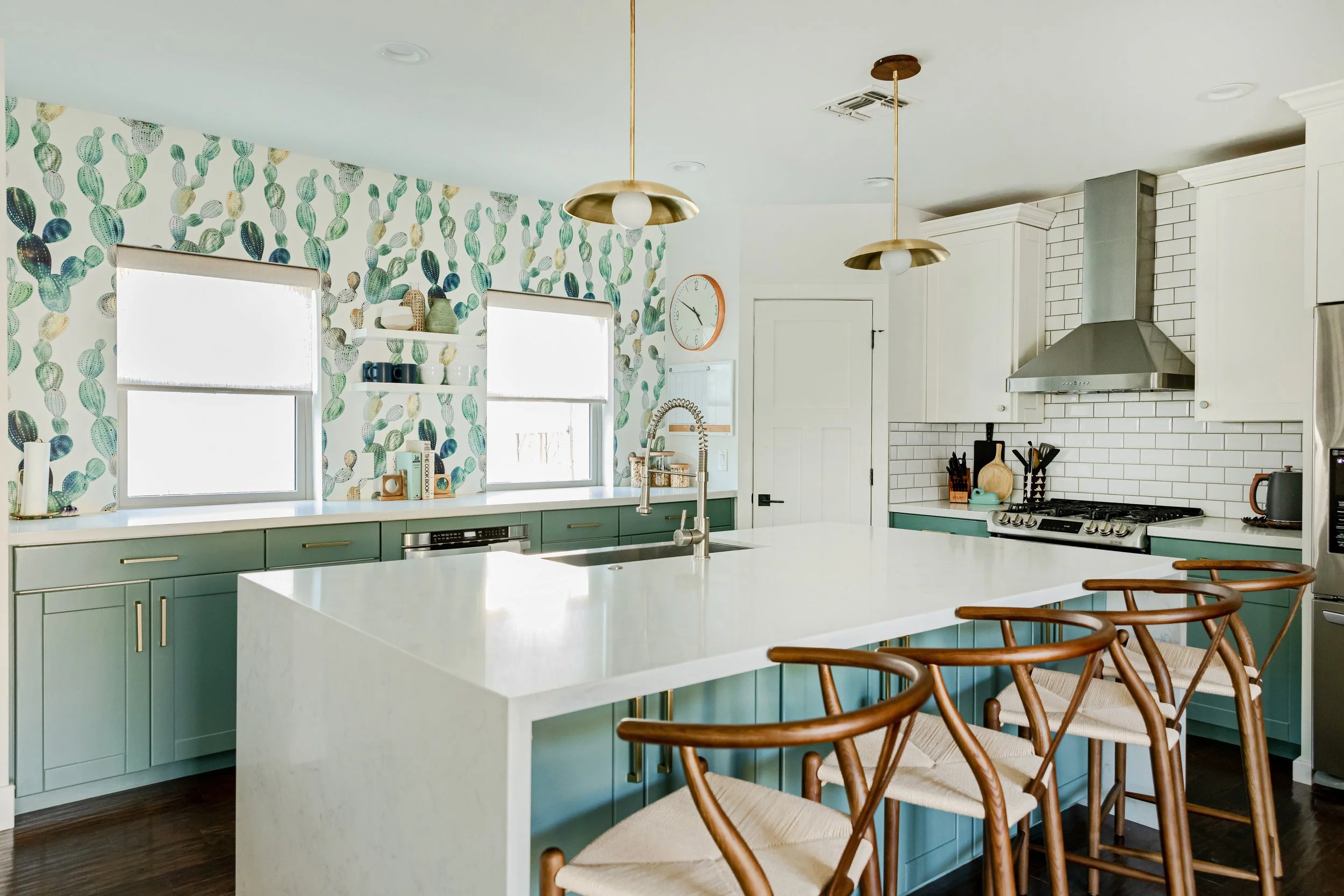Kitchen Island vs. Breakfast Bar: What’s Best for Your Space?
The kitchen is often the heart of the home, and its layout can make a big difference in how functional and good it feels to you. Two of the most popular features homeowners consider are kitchen islands and breakfast bars.
While both provide additional seating, storage, and style, they serve slightly different purposes. Deciding which one (or a combination of the two) is right for your kitchen comes down to your space, needs, and lifestyle.
Here are the differences and similarities between kitchen islands and breakfast bars—and how you determine which option works best for you.
What Is a Kitchen Island?
A kitchen island is a freestanding, multi-functional structure typically placed in the center of a kitchen. It often serves as a focal point in the room, providing additional counter space for food prep, storage, and sometimes appliances like sinks or cooktops. Islands can also double as informal seating areas when paired with stools, making them work for both cooking and gathering.
Key Features of Kitchen Islands:
Provides ample counter space for food prep, cooking, or serving.
Can include built-in storage like drawers, cabinets, or shelves.
Often accommodates appliances, such as sinks, stovetops, or mini-fridges.
Works well in larger kitchens where space allows for movement on all sides.
Kitchen islands are ideal for homeowners who want a central workspace with added flexibility and functionality. However, they typically require more square footage to maintain a good flow in the kitchen; otherwise, you’ll be stuck squeezing through your kitchen space.
What Is a Breakfast Bar?
A breakfast bar is a counter-height or raised section of a countertop designed specifically for casual dining or seating. Unlike a kitchen island, a breakfast bar is often attached to a wall, peninsula, or the back of an existing kitchen counter.
It’s perfect for quick meals, snacks, or providing additional seating in smaller kitchens where a full dining table or island may not fit.
Key Features of Breakfast Bars:
Designed primarily for seating and informal dining.
Attached to a wall, kitchen peninsula, or counter rather than freestanding.
Saves space while still offering functionality.
Often raised slightly higher than the surrounding countertops.
Breakfast bars are a great option for kitchens with limited space because they maximize functionality without requiring additional square footage. They’re also perfect for busy households where quick, casual dining is the norm.
Kitchen Island vs. Breakfast Bar: What’s the Difference?
The main differences between a kitchen island and a breakfast bar come down to their placement, purpose, and the space they require.
A kitchen island is a standalone feature positioned centrally in the kitchen, allowing access from all sides. In contrast, a breakfast bar is an extension of an existing countertop, wall, or peninsula. It’s primarily designed as a seating area.
Space plays a big role in choosing between the two. Kitchen islands are better suited for larger kitchens, where they can serve as both a functional workspace and a gathering spot without disrupting movement. On the other hand, breakfast bars are a more compact solution, making them ideal for kitchens where every square foot counts.
Can You Combine a Kitchen Island and a Breakfast Bar?
Yes, you absolutely can! A hybrid design that combines the best of both worlds is becoming increasingly popular. In these designs, a kitchen island incorporates a built-in breakfast bar by extending the countertop to create a seating area.
This option provides an island's workspace, storage, and appliance capabilities, along with casual breakfast bar seating.
Finding the Right Fit for Your Kitchen
Choosing between a kitchen island and a breakfast bar depends on your space, your needs, and how you use your kitchen. While islands offer versatility and function, breakfast bars save space and provide the perfect spot for quick meals.
And if you’re looking for both, a combination design gives you the best of both worlds.
No matter what you choose, the key is designing a space that works for you and enhances the flow and feel of your kitchen. If you’re ready to transform your kitchen into something beautiful and functional, Ravenhouse Design is here to help bring your vision to life.


